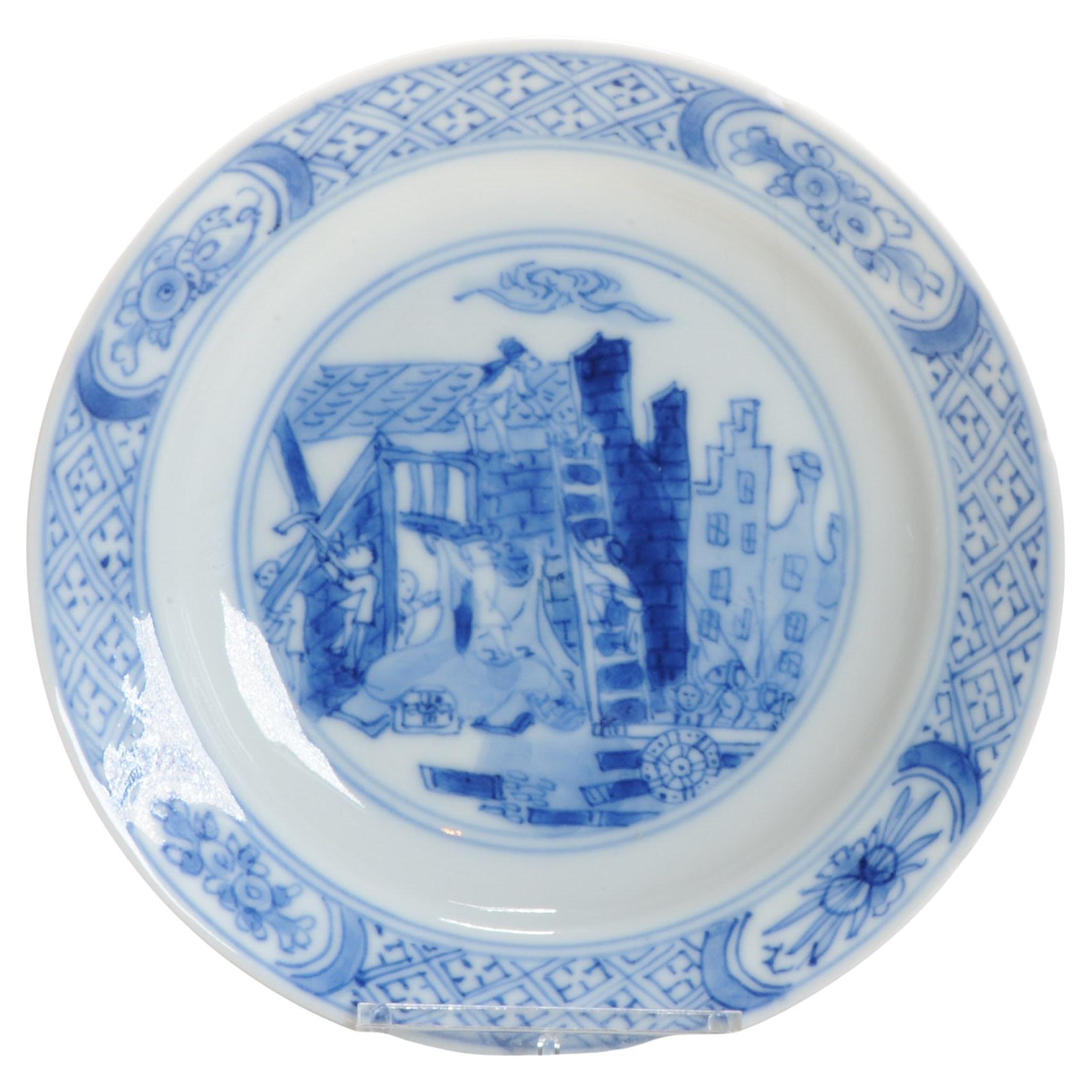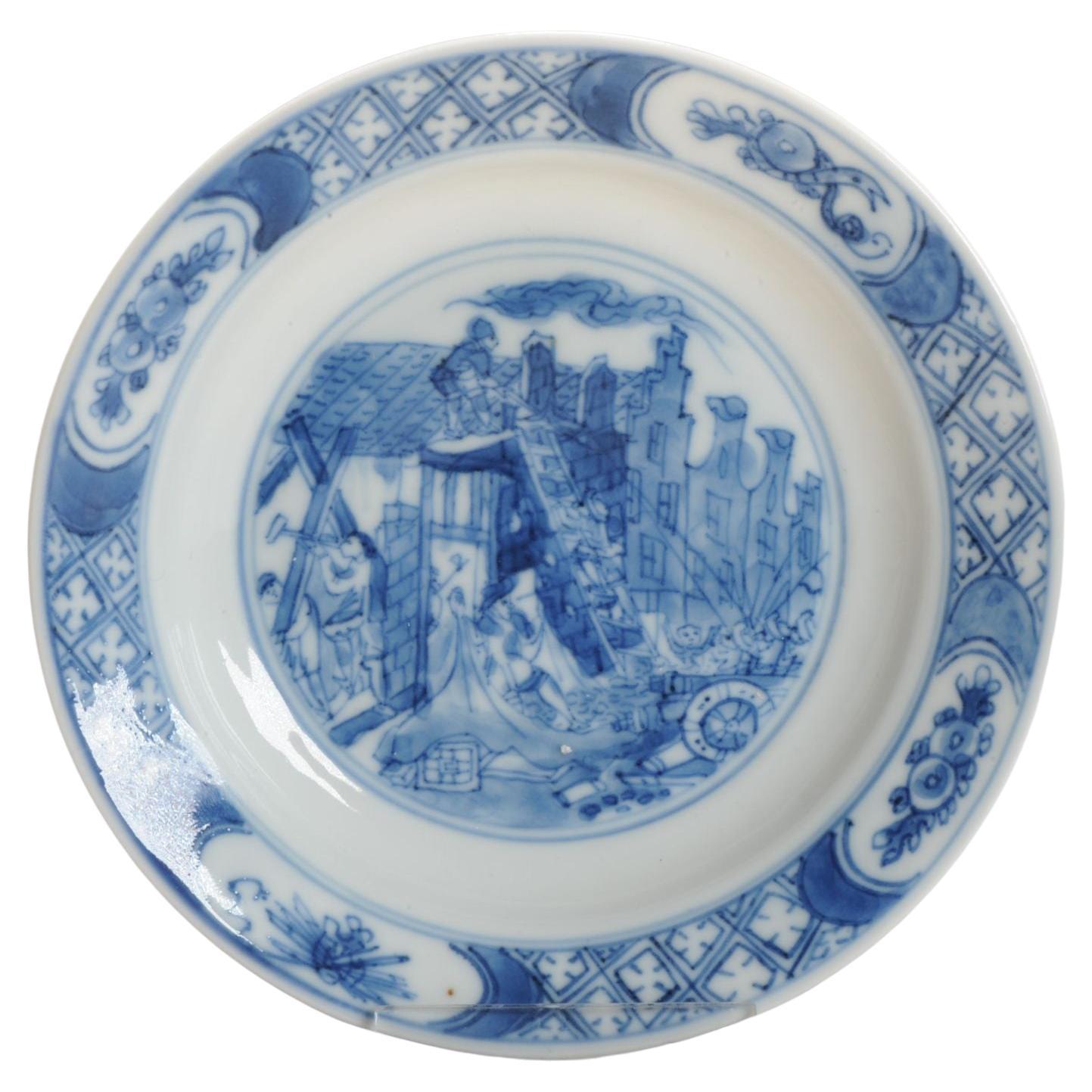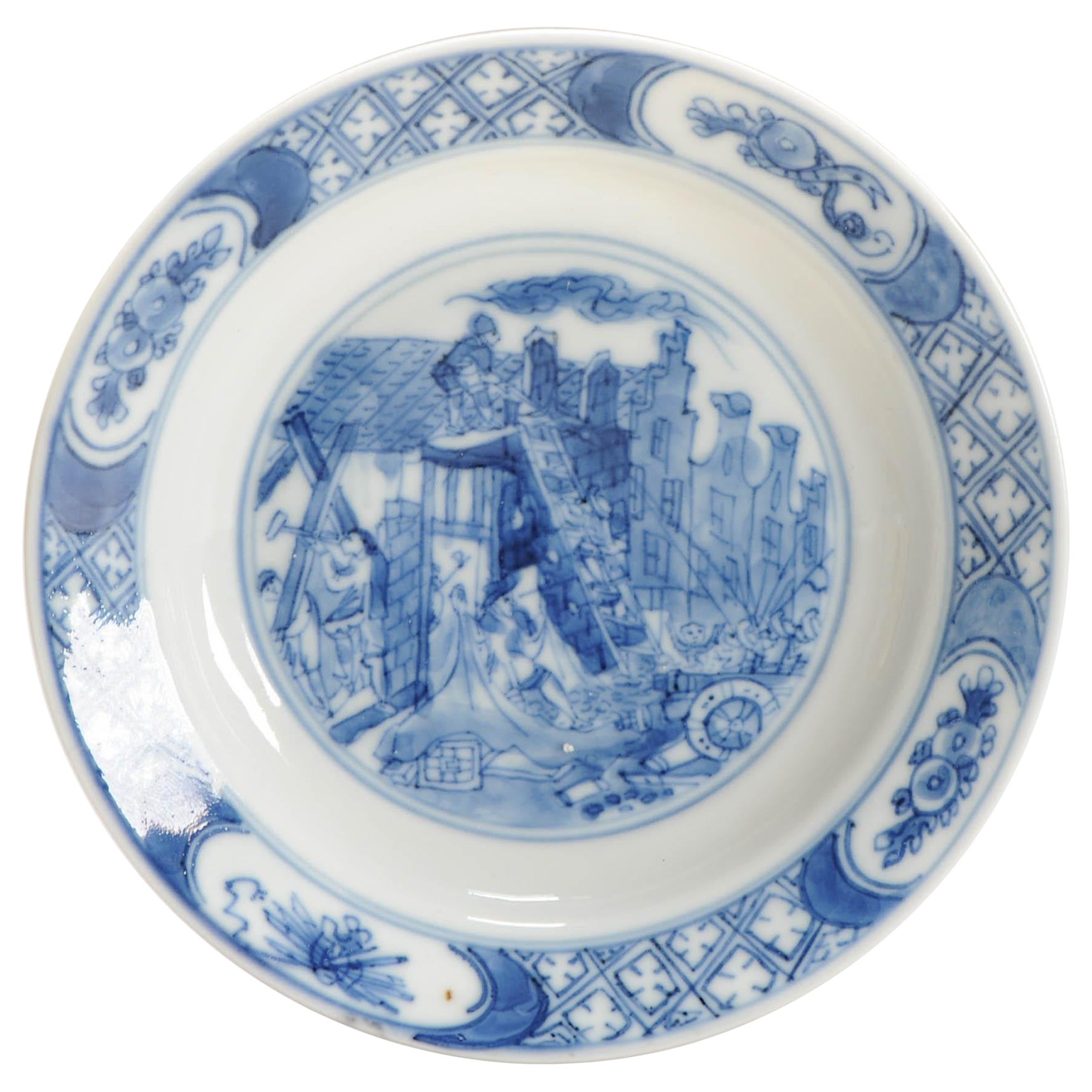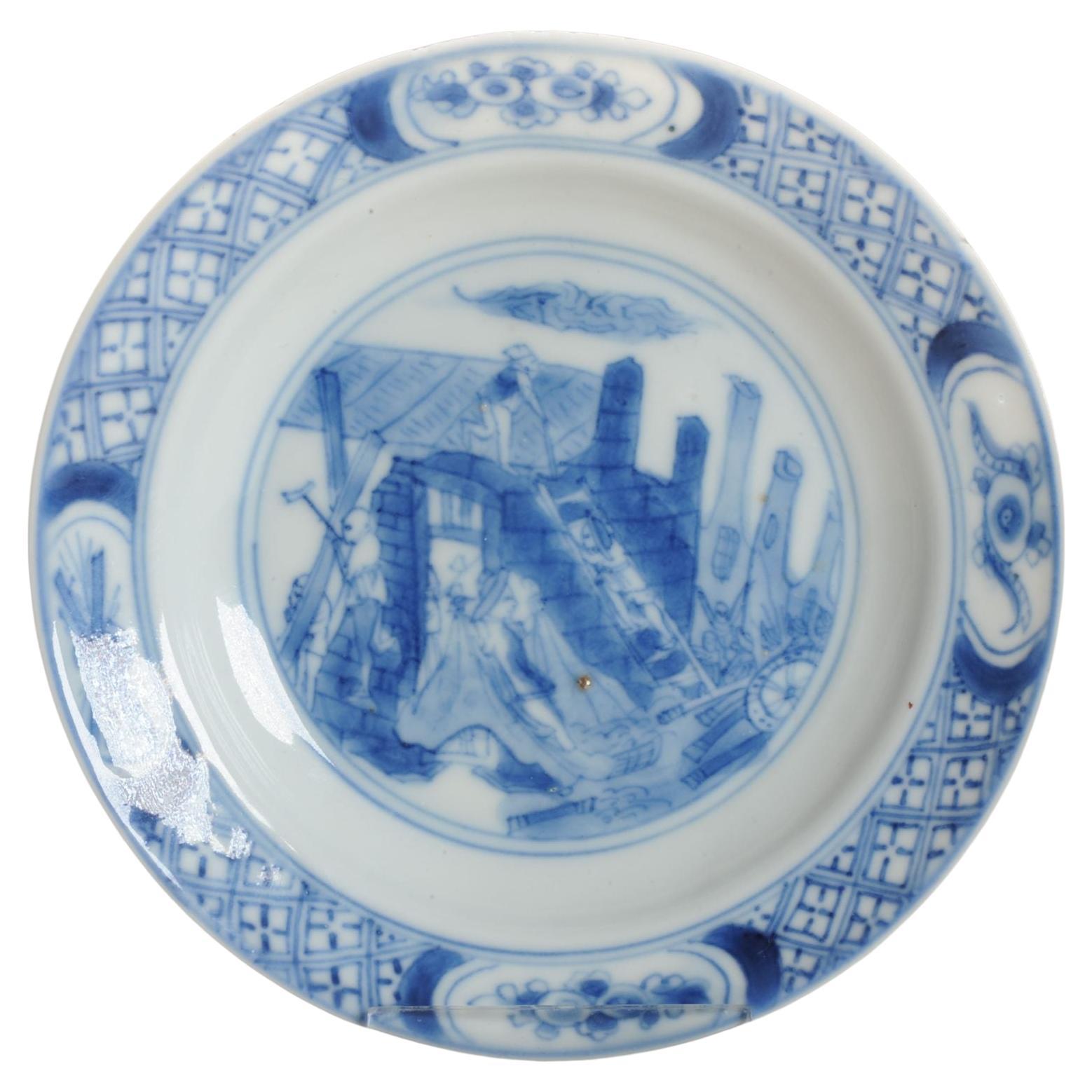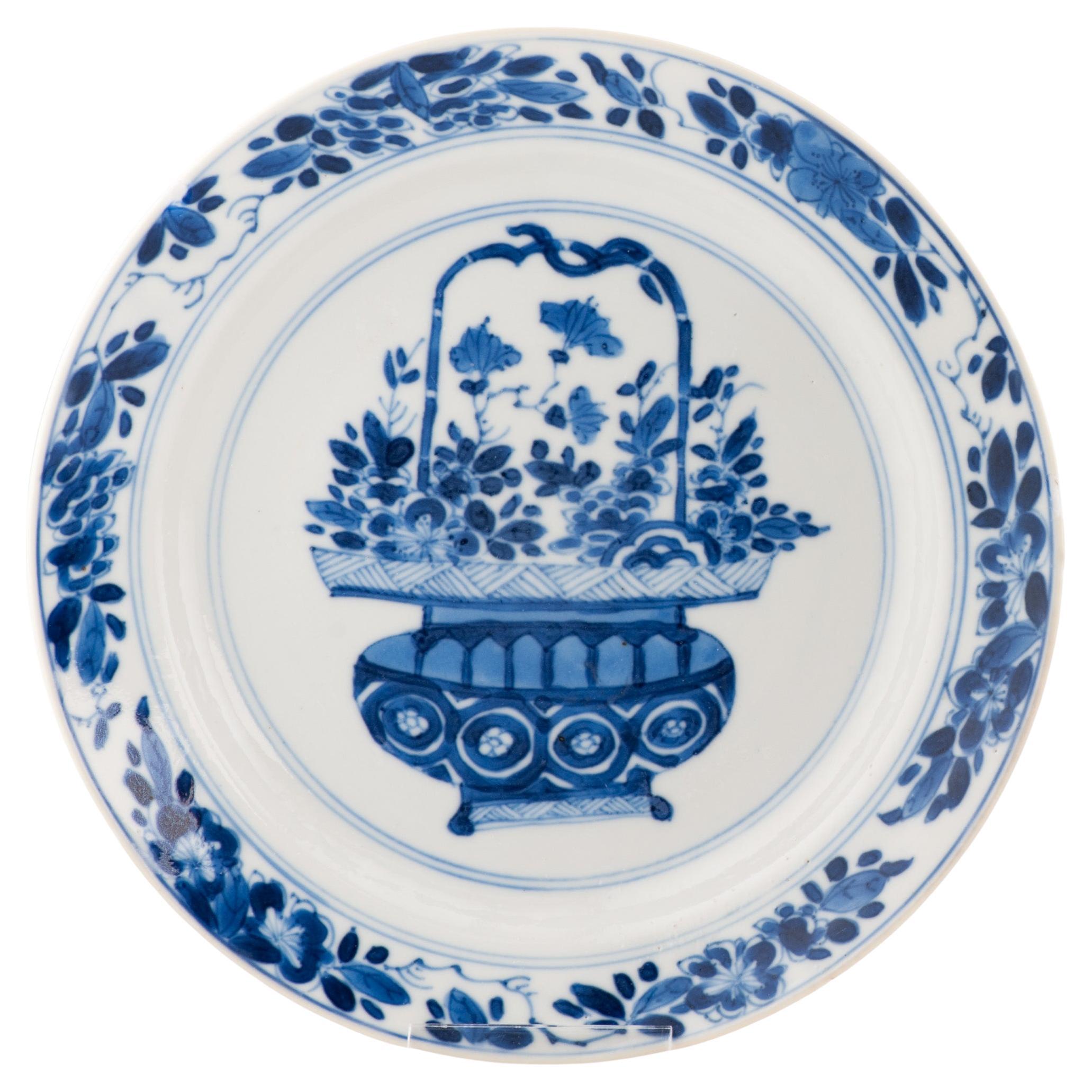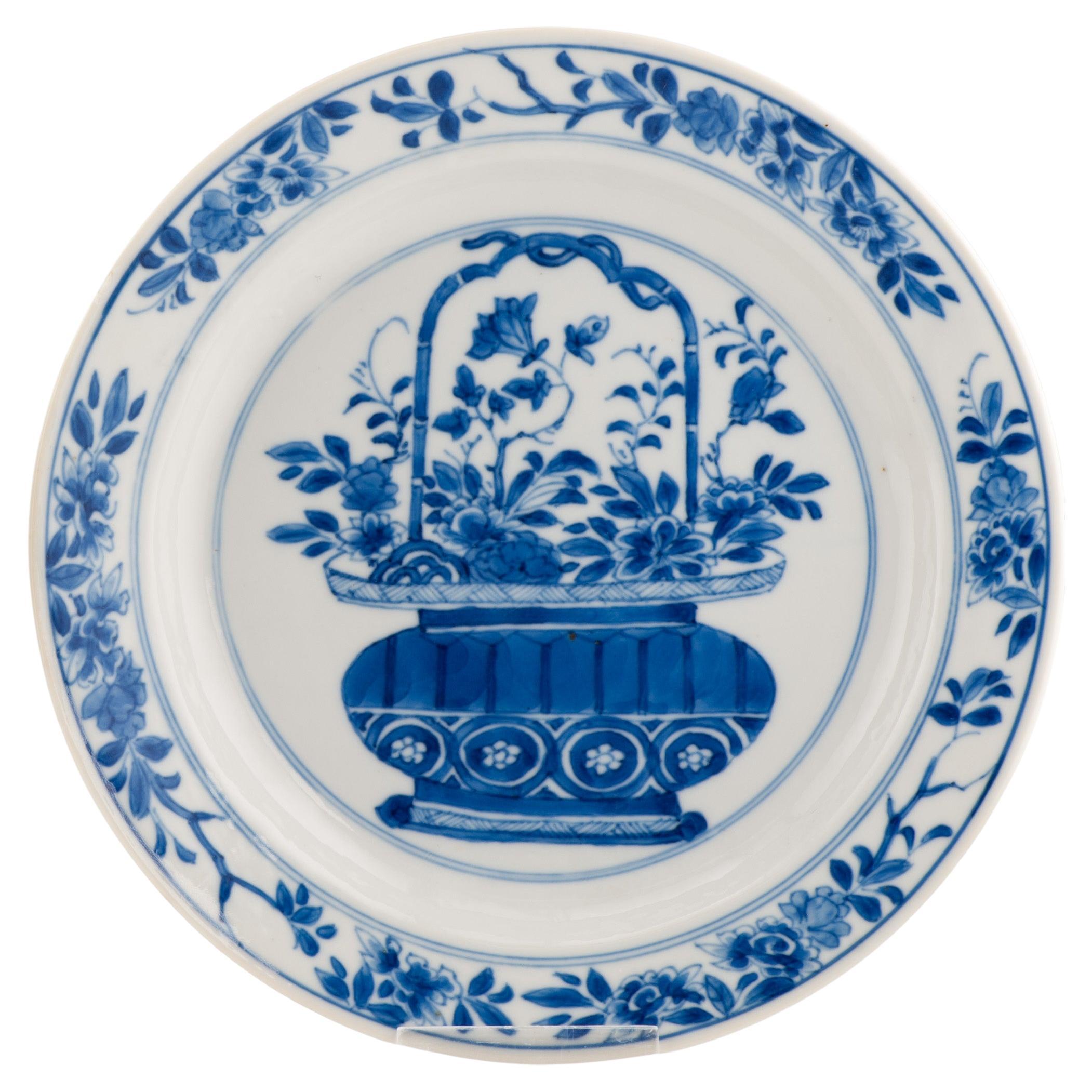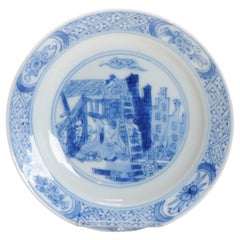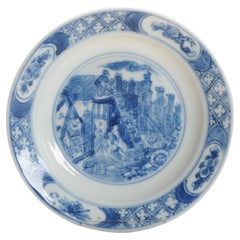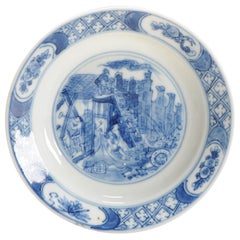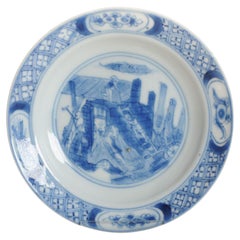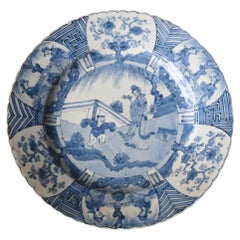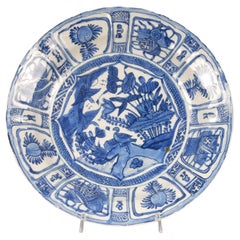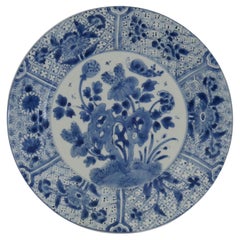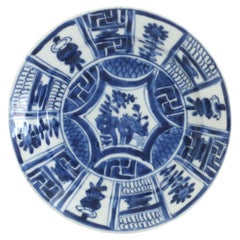Items Similar to Chinese Ca 1690 Kangxi Porcelain Plate Riot of Rotterdam / Kostermann Blue White
Want more images or videos?
Request additional images or videos from the seller
1 of 21
Chinese Ca 1690 Kangxi Porcelain Plate Riot of Rotterdam / Kostermann Blue White
$5,564.45
$6,955.5620% Off
£4,165.13
£5,206.4120% Off
€4,718.40
€5,89820% Off
CA$7,658.26
CA$9,572.8320% Off
A$8,535.93
A$10,669.9220% Off
CHF 4,478.51
CHF 5,598.1420% Off
MX$104,237.67
MX$130,297.0920% Off
NOK 56,707.70
NOK 70,884.6220% Off
SEK 53,597.40
SEK 66,996.7520% Off
DKK 35,919.78
DKK 44,899.7320% Off
About the Item
Description
A very nice example of the top quality made during the kangxi period. With sublime colors and painting. With the well know and interesting scene the Kostermann riot / Riot of Rotterdam. The base with a Chenghua mark.
The plate shows how Rotterdam citizens are busy demolishing the house of bailiff Van Zuylen van Nijevelt at the Leuvehaven on October 5, 1690. The walls are pulled down to apparently loud cheers from bystanders. The rough drawing is somewhat reminiscent of the prints that were put into circulation a little over a century later following the storming of the Bastille in France. The incident at the Leuvehaven was the climax of what became known as “the Kostermann riot”.
Riots the Rotterdam way
Rotterdam experienced quite a few riots in the seventeenth century, but these mostly had to do with tensions at the national level. But in 1690 there was no internal unrest in the Republic of the Seven United Netherlands. William III had been king of England for just two years and had held sway as stadtholder since 1672 over five of the seven provinces. It was peace and quiet in the Republic.
In spite of that peace, apparently in the last months of 1690 a situation could arise in Rotterdam in which the whole city was in riot, gates were closed, bridges were raised, houses looted and cannons roared through the streets. The riot seems to be a unique Rotterdam affair. Rotterdammers who, in 2015, zoomed by tram between North and South Rotterdam over the Schiedam dike along the Leuvehaven, are traveling past the backdrop of a real Rotterdam riot.
Creative tax evasion
The Kosterman riot is partly based on taxes. In the seventeenth century, among other things, “impost”, a kind of excise duty, had to be paid on wine. The collection of those taxes was done by tenant farmers. Anyone could become such a tenant, the right to collect the excise duties went to the highest bidder. The taxes and therefore also the tenant farmers were anything but popular and many inhabitants of the Republic were therefore very creative in circumventing those taxes. A conflict over the “impost” on a barrel of wine would be the first link in the chain of events that culminated in the riot.
A party that got out of hand
The militia of the city of Rotterdam welcomed a number of new midshipmen, i.e. militiamen with an honorary function, on Monday 28 August. To celebrate this, half an anchor of wine (about 15 liters) was fetched. Three midshipmen and a drummer set out to get the wine at an address where no “impost / tax” had to be paid. Three tenant farmers and two informants saw the small gunner's convoy from an inn on the Gelderse quay and gave chase. A struggle followed with much resistance by one of the midshipmen, Cornelis Kosterman. The guns were drawn and one of the informants, Antony Kerry, was killed.
The tenants filed a report and Kosterman was ordered by bailiff Mr. Jacob van Zuylen van Nijevelt arrested. Because he continued to deny during his interrogation, the interrogators concluded: "Since the prisoner Cornelis Kosterman continues to deny having beaten Antony Kerry, that selver may be brought to sharper Exam". In other words, torture was considered. Kosterman confessed two days later. In court, the bailiff demanded the death penalty. The aldermen of the city followed the demand and sentenced Kosterman to beheading by sword on a scaffold behind the city hall.
Chop five times
The verdict caused quite a stir. Kosterman did not belong to the lower class and then the punishment, even for such a serious crime, was rather severe and unusual. Certainly because it concerned the death of an employee, worse still a tell-tale, of the hated tenants. There was discontent. To make matters worse, the executioner couldn't quite deal with the menacing atmosphere around the scaffold and was so nervous that he had to hit as many as five times before Kosterman's head rolled. Moreover, it was rumored that stadtholder William III had pardoned but that the bailiff had ignored this. The next day a crowd gathered at the house of one of the tenants, Pieter van der Steen. The militia, comrades of Kosterman, did not intervene and the house was looted for a few hours.
Not exactly a beloved bailiff
News of the looting reached The Hague and the States of Holland sent soldiers to restore peace. The city council refused to let those soldiers into the city. Only a commission of inquiry was allowed to enter Rotterdam. Everything seemed to calm down after that. Until on 5 October in the morning hours a pamphlet directed against the bailiff was hung at the Stock Exchange. It read, among other things: "Schijnheiligh atheist, Loving whore skin / Geltsughtigh dwingelandt, uytbrood van de Hel". The bailiff did not do well in the other sixteen lines either. Van Zuylen Van Nijevelt was in any case not popular with the people of Rotterdam. He had been appointed by the stadholder without asking the council for advice. This did not endear him to the regents of the city. Ordinary Rotterdammers could also drink his blood, because he would extort people and put fines in his own pocket.
Photo: Rotterdam City Archives
Hey bailiff, we're going to demolish your house
As the bailiff drove home that afternoon, he was verbally abused by a bunch of thugs. One of them then got a beating from his servants and that didn't go well with older spectators. Again a crowd gathered, but this time at the bailiff's house on the Leuvehaven. Soldiers were sent to keep order. It escalated and several people were killed in the clashes. The mob then captured cannons from the Stronghold and the bailiff's house came under fire. The soldiers withdrew and the house was ransacked. Van Zuylen van Nijevelt had already run off before. After the looting, the house was demolished. Meanwhile, the participants had forced the city council to release all prisoners and Van Zuylen van Nijevelt was officially fired.
William III intervenes
Again the States of Holland intervened. As many as six regiments of soldiers were sent. Rotterdam closed its gates again. A special commission of inquiry looked into what had happened during the riots. The research showed how divided the regents of Rotterdam were. On the one hand, there were the 'Princesmen' led by Van Zuylen van Nijevelt. This group had made mutual agreements about the division of board positions. But there were also other regents who opposed it. They were led by Mayor Pieter de Mey. The riot against the bailiff seems to have been stimulated and even led from above in that regard. Certainly if it is taken into account that the pamphlet that unleashed everything, according to witnesses, was written by Bernard de Mandeville in the house of de Meij.
Ultimately, Van Zuylen van Nijevelt was acquitted in 1692 and reappointed by William III. In addition, the stadtholder demanded compensation for his protégé and fired six members of the council and the pensionary. The reappointed bailiff then went on with the purge. De Mey and his supporters had to clear the field and were replaced by prince-generals. Van Zuylen van Nijevelt did not enjoy his victory for a long time. He died three years later.
Condition
rotterdam 2 small chips, 1 with mini line and also 1 line from rim. Size 200 x 28mm D x H
Period
17th century Qing (1661 - 1912).
- Dimensions:Height: 1.11 in (2.8 cm)Diameter: 7.88 in (20 cm)
- Style:Qing (Of the Period)
- Materials and Techniques:
- Place of Origin:
- Period:
- Date of Manufacture:17th Century
- Condition:Wear consistent with age and use. rotterdam 2 small chips, 1 with mini line and also 1 line from rim.
- Seller Location:Amsterdam, NL
- Reference Number:1stDibs: LU4863227977342
About the Seller
5.0
Platinum Seller
Premium sellers with a 4.7+ rating and 24-hour response times
Established in 2015
1stDibs seller since 2019
264 sales on 1stDibs
Typical response time: 2 hours
- ShippingRetrieving quote...Shipping from: Amsterdam, Netherlands
- Return Policy
Authenticity Guarantee
In the unlikely event there’s an issue with an item’s authenticity, contact us within 1 year for a full refund. DetailsMoney-Back Guarantee
If your item is not as described, is damaged in transit, or does not arrive, contact us within 7 days for a full refund. Details24-Hour Cancellation
You have a 24-hour grace period in which to reconsider your purchase, with no questions asked.Vetted Professional Sellers
Our world-class sellers must adhere to strict standards for service and quality, maintaining the integrity of our listings.Price-Match Guarantee
If you find that a seller listed the same item for a lower price elsewhere, we’ll match it.Trusted Global Delivery
Our best-in-class carrier network provides specialized shipping options worldwide, including custom delivery.More From This Seller
View AllChinese Ca 1690 Kangxi Porcelain Dish Riot of Rotterdam/Kostermann Blue White
Located in Amsterdam, Noord Holland
We were lucky enough to acquire a very nice set of small saucer dishes with the well known and interesting scene of the Kostermann riot / Riot of Rotterdam (some historical informati...
Category
Antique 17th Century Chinese Qing Ceramics
Materials
Porcelain
$1,639 Sale Price
20% Off
Chinese Porcelain Dish Riot of Rotterdam/Kostermann Blue White Yu Marked, ca1690
Located in Amsterdam, Noord Holland
Set of small saucer dishes with the well known and interesting scene of the Kostermann riot / Riot of Rotterdam (some historical information below with also an original print of the ...
Category
Antique 17th Century Chinese Qing Decorative Dishes and Vide-Poche
Materials
Porcelain
$2,409 Sale Price
20% Off
Chinese Porcelain Dish Riot of Rotterdam/Kostermann Blue White Yu Marked, ca1690
Located in Amsterdam, Noord Holland
Very nice set of small saucer dishes with the well known and interesting scene of the Kostermann riot / Riot of Rotterdam (some historical information below with also an original pri...
Category
Antique 17th Century Chinese Qing Decorative Dishes and Vide-Poche
Materials
Porcelain
Chinese Porcelain Dish Riot of Rotterdam/Kostermann Blue White Yu Marked, ca1690
Located in Amsterdam, Noord Holland
Set of small saucer dishes with the well known and interesting scene of the Kostermann riot / Riot of Rotterdam (some historical information below with also an original print of the ...
Category
Antique 17th Century Chinese Qing Decorative Dishes and Vide-Poche
Materials
Porcelain
$2,409 Sale Price
20% Off
Antique 1680-1700 Chinese Porcelain Plate Kangxi Blue White Chenghua Mark
Located in Amsterdam, Noord Holland
Sharing with you this fantastic Chinese Porcelain Plate
Kangxi period.
Fantastic decoration in blue and white and marked with Chenghua at the base.
Please enjoy
Condition
Some rimf...
Category
Antique 17th Century Chinese Ming Ceramics
Materials
Porcelain
$1,451 Sale Price
20% Off
Antique 1680-1700 Chinese Porcelain Plate Kangxi Blue White Chenghua Mark
Located in Amsterdam, Noord Holland
Sharing with you this fantastic Chinese Porcelain Plate
Kangxi period.
Fantastic decoration in blue and white and marked with Chenghua at the base.
Please enjoy
Condition
Some rimf...
Category
Antique 17th Century Chinese Ming Ceramics
Materials
Porcelain
You May Also Like
Blue And White Porcelain Plate, Kraak Style – Early Kangxi Period, 1670–1690
Located in Bilzen, BE
"Blue And White Porcelain Plate, Kraak Style – Early Kangxi Period, Circa 1670–1690"
Early Kangxi Blue and White Porcelain Plate in Kraak Revival Style – ca. 1670–1690
China, Jingdez...
Category
Antique Late 17th Century Chinese Qing Ceramics
Materials
Porcelain
Chinese Ming Porcelain Early 17th Century Blue White Plate Charger Kraak Dish
Located in Wommelgem, VAN
Antique Chinese porcelain blue and white Ming charger
Blue and white ceramic deep dish.
Material: Chinese porcelain, Ceramic
Style: Chinese, Ming, Anti...
Category
Antique 17th Century Chinese Ming Ceramics
Materials
Ceramic, Porcelain
Chinese Kangxi Mark & period Plate or Dish Porcelain Blue & White, Ca 1700
Located in Lincoln, Lincolnshire
This is a very beautifully hand-painted Chinese porcelain blue and white large plate or Dish, from the Qing, Kangxi period, 1662-1722.
The plate / dish is finely potted with a caref...
Category
Antique Late 17th Century Chinese Qing Ceramics
Materials
Porcelain
Chinese Kraak period Plate or Dish Porcelain Blue and White, Ming Wanli, Ca 1610
Located in Lincoln, Lincolnshire
This is a hand-painted Chinese Export Kraak porcelain blue and white Side Plate or Dish, which we date to the Ming, Wanli period,( 1573-1620 ), datin...
Category
Antique Early 17th Century Chinese Chinese Export Ceramics
Materials
Porcelain
Chinese Porcelain Plate for Export, Blue Decoration
Located in Lisboa, Lisboa
Chinese porcelain plate for export. Blue and white decoration, representing a river landscape, with plant motifs, bridge, house and pagoda. Qing Dynasty, Qianlong period (1736-1795)....
Category
Antique Mid-18th Century Chinese Baroque Porcelain
Materials
Porcelain
18th C Chinese Porcelain Plate Blue & White Hand Painted, Qing Qianlong Ca 1770
Located in Lincoln, Lincolnshire
This is a hand painted blue and white Chinese porcelain plate, dating to the second half of the 18th century, circa 1770, the Qing Qianlong dynasty.
This very good condition of this...
Category
Antique 18th Century Chinese Chinese Export Ceramics
Materials
Porcelain
More Ways To Browse
Dior Asia
Asian Wall Plates
Old Chinese Ceramics
Kangxi Blue And White
Kangxi Blue And White Porcelain
Old Blue And White Porcelain
Kangxi Plates
Blue And White Plates England
Chinese Plate Kangxi
Wine 17th
Chinese Blood
Antique China Porcelain Collectibles
Asian Sword
Fine China Plates Blue
17th Century Porcelain Marks
Chinese Porcelain Republic Period
Small Cannon
Chinese Soldier
